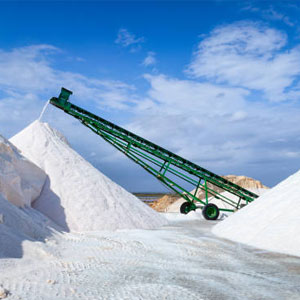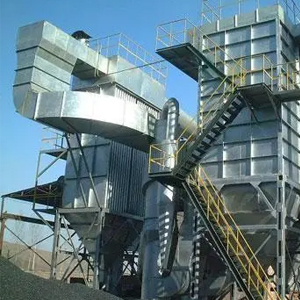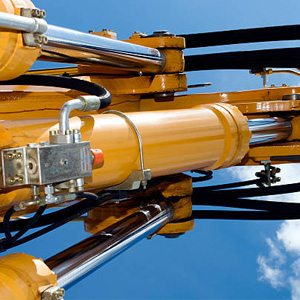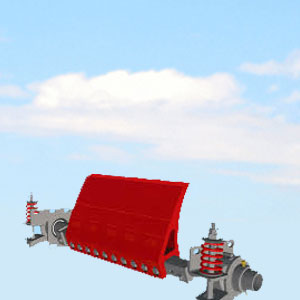What is conveyor belt ?
The conveyor belt is a composite product of rubber, fiber and metal used for carrying and transporting materials in the belt conveyor belt.
Conveyor belts are widely used in cement, coking, metallurgy, chemical industry, steel and other industries where the conveying distance is short and the conveying volume is small.
Four types of conveyor belt
- Patterned conveyor belt
The patterned conveyor belt is an inclined conveyor belt composed of a patterned covering rubber with a working surface and a covering rubber with a non working surface and a belt core. The belt surface has a herringbone pattern that is higher than the belt body.
The pattern can be opened or closed. Each pattern can be divided into three types: high, medium and low. The pattern shape and height are required to be different due to different materials transported and different conveying inclination angles.
Commonly used varieties include herringbone, splay, fishbone, U-shaped, cylindrical, pockmark, etc. Or designed according to the user’s requirements, it is applicable to the patterned conveyor belt of powdery, granular and blocky materials with an inclination of less than 30 degrees.
- Skirt conveyor belt
The skirt conveyor belt is mainly used for conveying at 0-90 ° inclination angle. The skirt conveyor belt is divided into two types: conveyor belt with skirt and without partition and conveyor belt with skirt and partition. It can make all kinds of bulk materials continuously transported at any inclination angle of 0-90 degrees, with large conveying inclination angle, wide application range and small floor area.
The corrugated rib conveyor belt can transport various bulk materials, from coal, ore, sand to fertilizer and grain, in horizontal, inclined, vertical and variable angle directions. The particle size of materials is unlimited, ranging from very small particle size to 400mm large particle size, and the conveying capacity can range from 1 m3/h to 6000 m3/h.
- High angle conveyor belt
The high angle wavy edge band consists of base band, edge band and diaphragm. The rib plays a role in preventing materials from sliding. In order to bypass the drum, the rib is designed to be corrugated.
The diaphragm plate is used to support materials. In order to achieve large angle conveying, T-type TC type is adopted. The flange and diaphragm plate are connected with the base belt by secondary vulcanization, which has high connection strength. Suitable for conveying powdery, granular, small, paste and liquid materials that are easy to scatter.
- Heat resistant conveyor belt
The heat-resistant belt of belt conveyor is divided into ordinary heat-resistant belt and powerful heat-resistant belt. The temperature of the heat-resistant belt conveying materials shall not exceed 800 ℃, and the belt surface temperature shall not exceed 220 ℃.
The heat-resistant belt conveyor is mainly used in metallurgy, construction and other industries to transport high-temperature materials such as sinter, coke, cement clinker, etc. The material temperature is not more than 800 ℃, and the belt surface temperature is not more than 220 ℃.
About PT. NAR
PT . NAR is a company that provides all kinds of conveying equipment and conveying accessories. And we have different kinds of conveying equipment, such as telescopic belt conveyor, roller conveyor, ship loader and so on. Our technicians can provide satisfactory solutions according to customer needs.
Precautions for conveyor operation
- Before using the conveyor, check whether the operating parts, belt buckles and bearing devices are normal and whether the protective equipment is complete. The tension of the tape must be adjusted to an appropriate degree before starting.
- The belt conveyor shall be started without load. The material can be fed only after the operation is normal. It is forbidden to feed before driving. When several conveyors are running in series, they should start from the discharge end in sequence. Only after all of them are in normal operation can they be fed.
- No pedestrians or passengers are allowed on the conveyor belt.
- Stop feeding before stopping the machine, and stop the machine only after all the materials stored on the belt are unloaded.
- It is forbidden to pull the belt by hand when the belt slips, so as to avoid accidents.
Advantages of our service
- Competitive price and quality from our own factory
- Approved by ISO9001, CE, SGS every year
- Best service with 24 hour`s reply
- Flexible payment with T/T,L/C , paypal, kunlun bank, etc
- Smooth production ability
- Quick delivery and standard exporting package
- OEM/ODM





Reviews
There are no reviews yet.